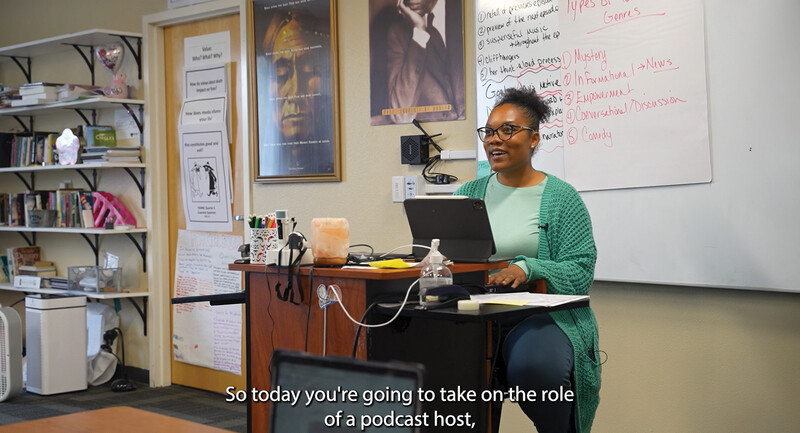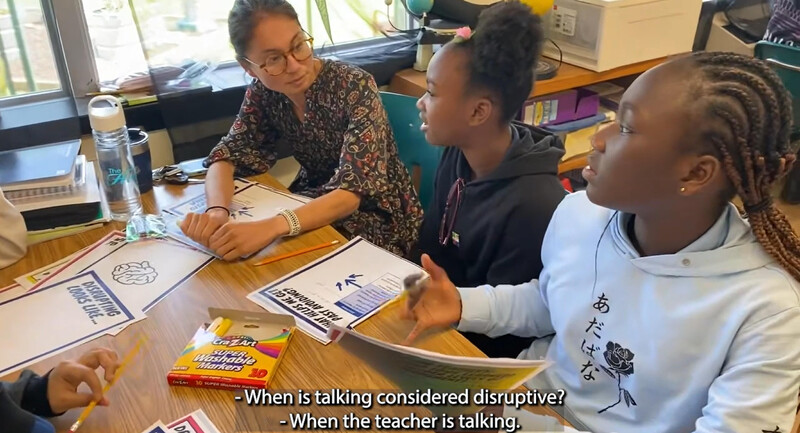As we begin a new school year, teachers will focus on teaching and learning. In the 1980s, the focus was on content knowledge and mastery learning. Today’s student must be able to apply content knowledge and conceptual understanding across content areas. Application is also known as a transfer. According to Grant Wiggins (2013), “Transfer is the bottom-line goal of all learning, not scripted behavior. Transfer means that a learner can draw upon and apply from all of what was learned, as the situation warrants, not just do one move at a time in response to a prompt.”
“Teachers in thinking classrooms understand how to use concepts to integrate student thinking at a deeper level of understanding – a level where knowledge can be transferred to other situations and times” (Erickson, 2007, p. 22). How can teacher teams design curriculum and instruction that create ‘thinking classrooms’? Skills such as critical thinking, problem-solving, collaboration, and applying academic knowledge are in high demand, even for students who graduate from high school and enter the workforce without a college degree.
Can you identify the last time your assignment required students to engage in a productive struggle? One barrier to critical thinking in classrooms is the temptation to march through standards and to cover each unit of study. Standards are not designed to be a checklist and students need time for reflection. Students develop deeper understanding when they have time to struggle. Too often, U.S. classrooms provide a safe zone where failure is not an option. It is not an option, because students are spoon fed the correct answer, rather than asking students to create, collaborate, think critically, analyze, write, and explore.
What does productive struggle look like? “In a productive struggle, students grapple with the issues and are able to come up with a solution themselves, developing persistence and resilience in pursuing and attaining the learning goal or understanding” (Allen, 2012, A Conversation with Author and Educator Robyn Jackson). Classroom assignments should be designed with the end in mind. “In other words, if we want students to be able to apply their learning via autonomous performance, we need to design our curriculum backward from that goal” (McTighe and Wiggins, 2012, p. 9). Once teachers identify the learning target, they should design assignments and assessments that allow students to think critically and apply their understanding.
5 Ways To Develop Critical Thinking Skills
Accountable Talk
Accountable Talk provides a structured format for students, so all students know how to engage in the conversation and how to ask their partner thought-provoking questions. Accountable Talk is a method of inquiry that sharpens students’ thinking by reinforcing their ability to reflect and think critically. For more resources on Accountable Talk, visit The Institute For Learning.
Essential Questions
Grant Wiggins and Jay McTighe highlighted the importance of essential questions in their books on curriculum design. An essential question supports student understanding and often crosses disciplines. An essential question is timeless, rather than the typical multiple choice questions students are asked from kindergarten to twelfth grade. When teacher teams discuss essential questions, it provides clarity for a unit and a course. Employers continue to seek high school and college graduates who can think critically, solve problems, create, and add value to an organization. When students learn to answer essential questions, they will become more valuable to the workforce. What essential questions will be explored at your school this year?
Quick Write
A “Quick Write” is a strategy to support reflection, critical thinking, and application. A quick write could be on a post-it note, a journal, or on an exit ticket. “Creating a space for your students to write often and routinely in a low-pressure way allows more creativity to discover what they might want to say—and to see what they don’t want to write about” (Alber, 2016). Writing allows students to make meaning of what they are learning. “Teachers who promote reflective classrooms ensure that students are fully engaged in the process of making meaning. They organize instruction so that students are the producers, not just the consumers, of knowledge” (Costa & Kallick, 2008).
Formative Assessment
Formative Assessment is a method of measuring student understanding. In some schools across the United States, this term has become confused with benchmark testing and test prep. Formative assessment, done well, represents one of the most powerful instructional tools available to a teacher (Stiggins & DuFour, 2009). If you would like to strengthen Formative Assessment in your school, visit 60 Non-Threatening Formative Assessment Techniques (TeachThought, 2015).
Reflection
Reflection is a lost art. With the push to cover more content and standards, teachers often make a choice between coverage or pausing for reflection. Reflection comes in many forms: reflective journals, group work, whole class, silent reflection, reviewing yesterday’s work, reflecting on an essential question, or creating a product that shows your thoughts about a previous lesson or understanding.
How often do students feel like the pace of schooling is rushed? Once a unit is finished, the teacher moves to the next unit. Reflection involves slowing down to share what we learned. In the absence of reflection, it is unlikely that a classroom, how will students make meaning out of their experiences? Clements highlights 35 Questions For Student Reflection.
Conclusion
Critical thinking is a skill that can be developed through intentional planning. Does your pacing guide provide students with time to pause and reflect? If your pacing guide ends Unit 4 on a Friday and begins Unit 5 on a Monday, you may need to revise the pacing guide. Most of the students we teach will not enter the workforce and have the same job for 30 years. Employability skills will include the ability to apply knowledge and skills across disciplines and employment opportunities. How will you design instruction to support student understanding and transfer? As you meet with your teacher team to develop lessons and assessments, analyze the number of time students have to question, talk to their peers, write, and reflect. It’s no longer important to focus on what the teachers can do with the content. The goal is to see how students can demonstrate understanding in multiple ways.








